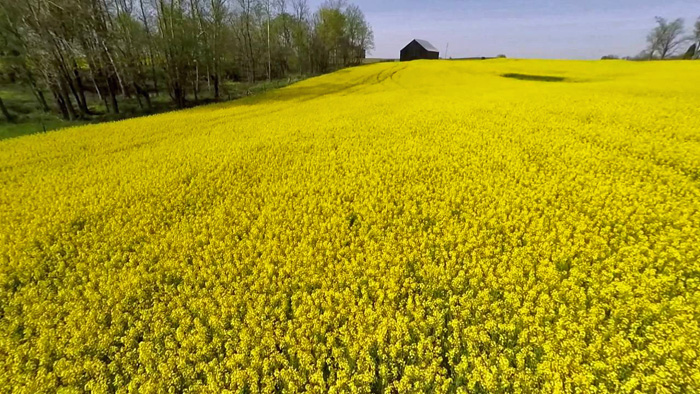The mustard family of plants, also called Brassica is very diverse and has numerous members. Our canola, Brassica napus is from this family, but so is kale, rutabaga, turnip, swede, cabbage, broccoli, brussel sprouts, cauliflower, mustard and many more.
Rapeseed is a much more recent evolution than wheat. I should probably explain the difference between rapeseed and canola before we proceed any further. Rapeseed is the naturally evolved plant. Canola is man-made. Both are identified as Brassica napus. A natural cross between two distinct members of the mustard family; cabbage with 9 chromosomes and turnip with 10 chromosomes joined to form Argentine rapeseed (Brassica napus) with 19 chromosomes. It is called Argentine because we first imported it as an undeveloped rapeseed plant from Argentina. In 1936 we also imported a Polish rapeseed plant. Rapeseed was an industrial oil gaining popularity during World War II as Germany could not get access to fossil fuel oil to run their machines, they adapted to using rapeseed oil not only to lubricate their machines but to burn the rapeseed oil in their diesel engines. Rapeseed or canola oil can be directly substituted for diesel fuel in warm conditions. In the cold it gets too thick (viscous) to be useful unless heated. To prevent the viscosity from being a problem, chemists have turned the rapeseed or canola oil into an ester, a biodiesel. This is easily done in any 45 gallon barrel in your backyard. There is even a version of a mustard plant, Brassica carinata that can directly produce jet fuel.
Before the 1970’s Canada had no healthy edible vegetable oil. We ate a lot of butter and lard. The search for an edible vegetable oil started with taking the two non-edible ingredients out of rapeseed. Erucic acid is a component of rapeseed that produces fatty deposits in the heart; unhealthy. Glucosinolates, also a component of rapeseed are detrimental to human and animal health because they interfere with the uptake of iodine in our bodies, contributing to liver disease.
Dr. Keith Downey in Saskatchewan and Dr. Baldur Stefannson in Manitoba selected and crossed rapeseed cultivars to reduce the erucic acid and glucosinolates. They were successful in the mid 1970’s and canola was the new name they gave this man-made plant in 1978. The definition of canola is that it must have less than 2% erucic acid and less than 30 micromoles per gram of glucosinolates. Canola was not recognized as a “generally recognized as safe” (GRAS) food in the USA till 1986.
Today Canada is the world’s largest producer of this healthy vegetable oil, producing more than 18 million tonnes annually. The next closest producer is China at 13 million and India at 9 million. We can boast that we produce 10 times more canola than the USA. Canola does not like hot weather as its flowers spontaneously abort above 30 degrees Celsius.
Canola is arguably the healthiest edible vegetable oil in the world after flax. Unfortunately, the healthy part of flax, linolenic acid is also very unstable and will quickly go rancid at room temperature making it harder to market.
Since rapeseed and canola are very recently evolved, they still have characteristics of wild plants; their seeds shatter and do not stay on the plant at maturity. Canola is quite easily manipulated by plant breeders and finally only about 10 years ago they were able to breed a non-shattering characteristic into canola. This had an immediate uptake by farmers who now could park their swathers and straight-cut their canola in the same way they straight-cut their other crops like wheat.




